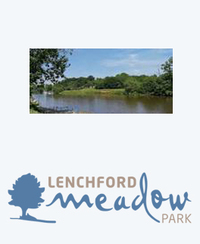Many thanks to the folks at
Lenchford Meadow Park for facilitating this camera's location on the B4196 near Lencford and to
Worcestershire County Council for capitally funding its installation. Please click
here for flooding information regarding this location. The B4196 road frequently experiences flooding outside the Lenchford Inn during periods of high water levels in the River Severn. To address this concern, a strategically positioned Farson streaming webcam has been deployed to provide real-time monitoring of water levels and road conditions in the area.Historical records indicate that Henry Thrupp served as the innkeeper at the Lenchford Inn in Shrawley, Worcestershire, from at least 1859 to 1873, and potentially until the 1880s. Additionally, he operated a blacksmith business in the village and was involved in the transportation of coal and other goods via canal boats throughout the local region. Noteworthy notebooks kept by Henry Thrupp and Mrs. Thrupp, both associated with the Lenchford Inn in Shrawley, contain rudimentary accounts and records pertaining to their various businesses, including the inn, coal merchant operations, canal boat cargo trade, and blacksmithing.The collection comprises three account books maintained by Henry Thrupp. One book, titled "Blacksmith Book 1866," focuses on blacksmithing activities. Another, titled "Accounts on Voyages, Cratewood, and Coal Boat Accounts," dates back to 1873 and documents the transportation of coals by canal in the area. The third account book covers the years 1859 to 1861 and encompasses coal transportation, other cargo such as agricultural produce, as well as accounts related to the Lenchford Inn. Mrs. Thrupp's notebook, covering the period of 1838 to 1840, serves as a "receipt book" and contains accounts from that time, along with a variety of recipes, including those for homemade wine and remedies for ailments.The Lenchford Ferry at Shrawley has a long-standing history, traceable back to the 18th century. Like many other ferries, it was operated by the landlord of the Lenchford Inn. In the late 18th century, during Witley Court's peak splendor, Lenchford served as the closest point on the river for unloading coal transported by barges from collieries at Himley. Records indicate that up to 2,000 tons of coal were stored at Witley Court at certain times during the 19th century. Upon arrival, the barges were unloaded onto horse-drawn carts, and the procession of coal-laden carts between Lenchford and Witley Court would continue for several weeks. The Earle and Countess of Dudley, known for their lavish entertaining, resided at Witley Court. Notably, my grandmother's 21st birthday aligned with a grand ball held there as the finale to a shooting party week, where distinguished guests such as Edward, Prince of Wales, the Earl and Countess of Cadogan, the Duke and Duchess of Devonshire, and numerous other nobles and titled individuals were in attendance.During World War II, the Lenchford Inn remained a popular destination for Saturday night dances, particularly among American soldiers stationed at Westwood Park. These soldiers quickly discovered the local public houses in Ombersley and Holt Fleet, and wasted no time in inviting young girls from Ombersley to join them at the Lenchford. This development left Peter Sansome, a farmer residing in Claines, and his friends feeling rather discontented, as the G.I.s seemed to attract the attention of the local young ladies. On one occasion during a Saturday dance night, the Americans generously provided a tray of delightful sandwiches. Seizing an opportunity, Peter and his friends claimed the entire tray and consumed its contents in the car park while the Americans were occupied on the dance floor.
Recently, I received a set of notes written by a man who frequently stayed near the beloved yet treacherous River Severn, close to the Lenchford. This man hailed from Smethwick and first visited the area at the age of sixteen in 1928. He continued to spend holidays there for most of his life until 1990. In his writings, he expressed his deep affection for the countryside, describing the exhilaration of breathing fresh air and enjoying the beautiful views and open spaces. He acquired extensive knowledge about the local flora and fauna and developed an understanding of the rural residents who befriended him and his family. Reflecting on those days, he fondly compared the idyllic surroundings to the less desirable alleyways of Smethwick they had to return to.






